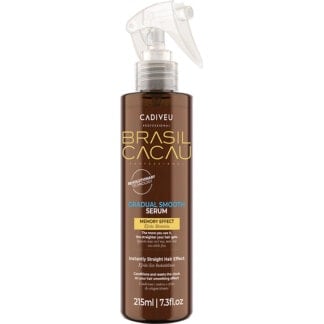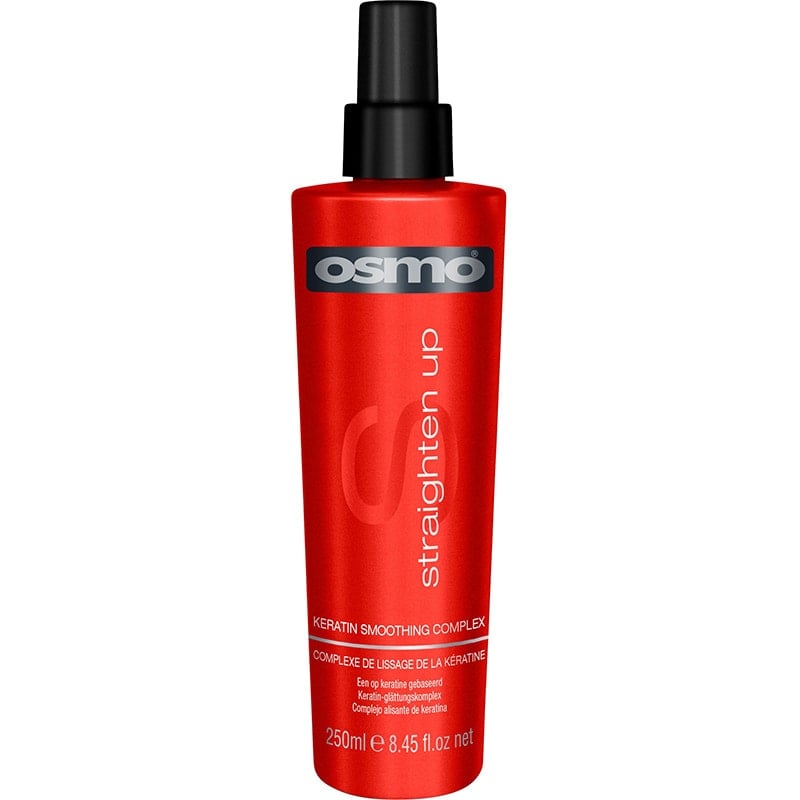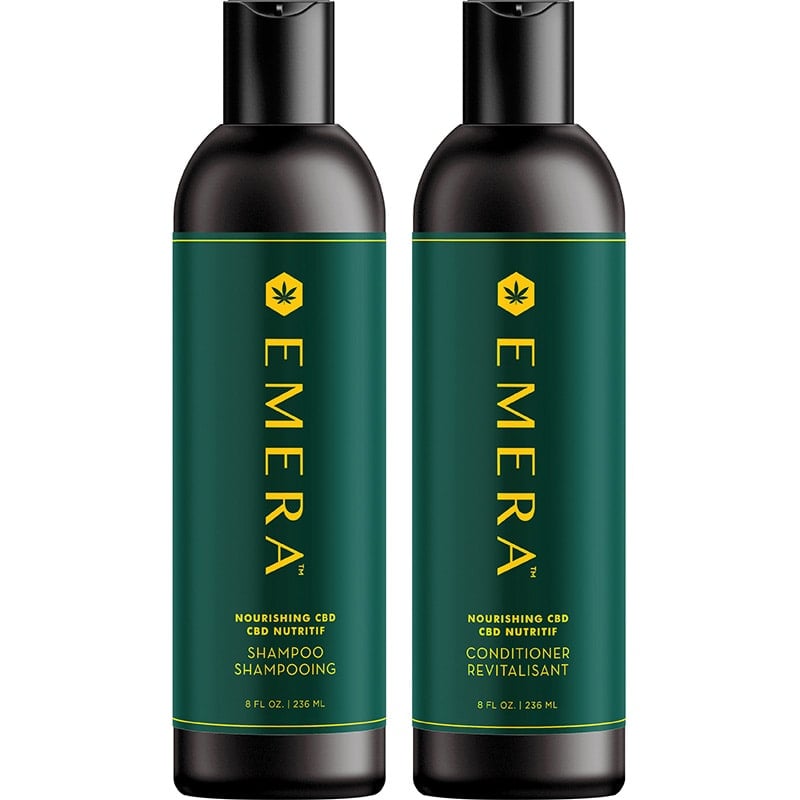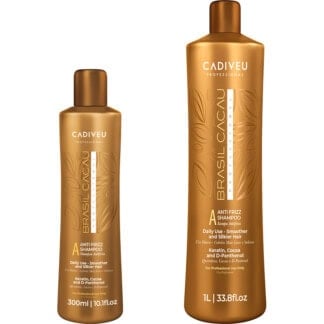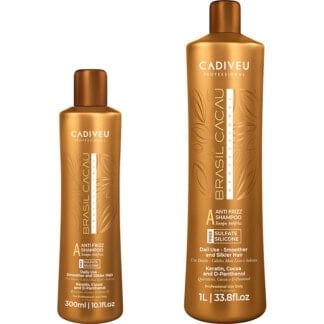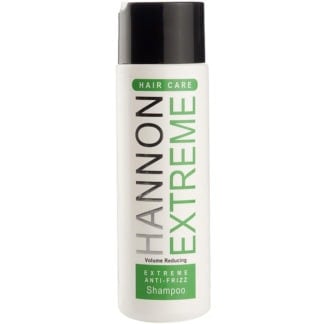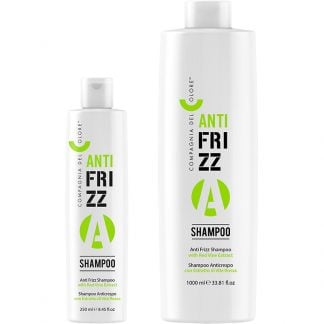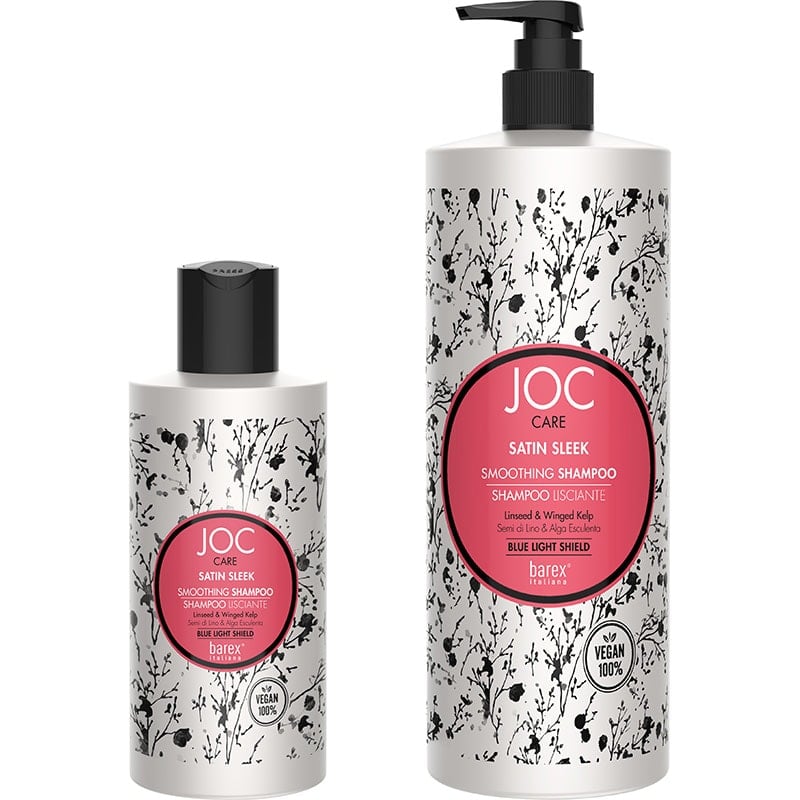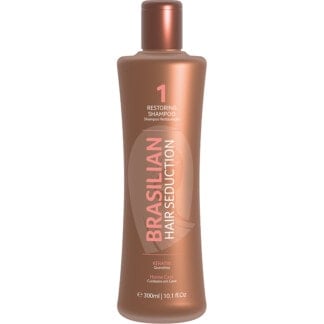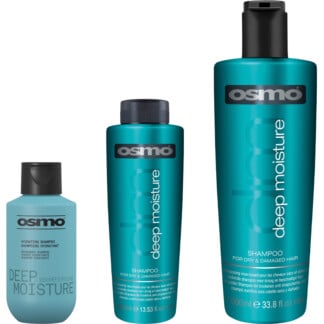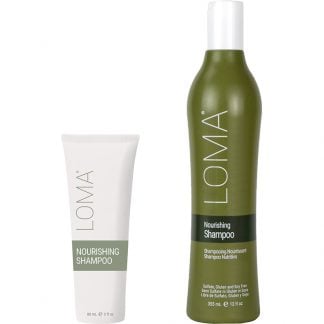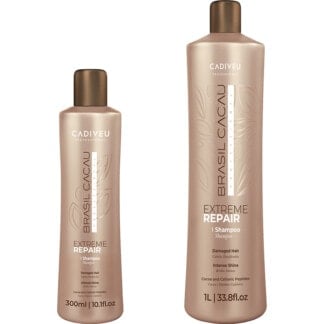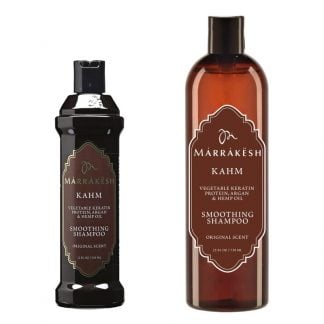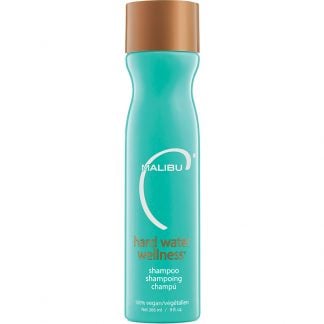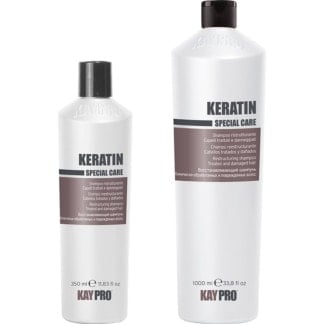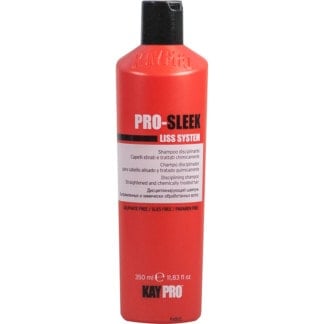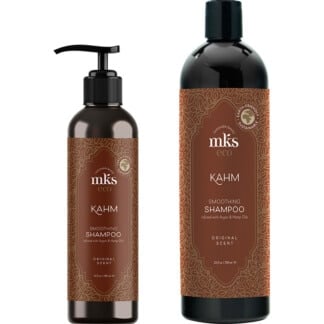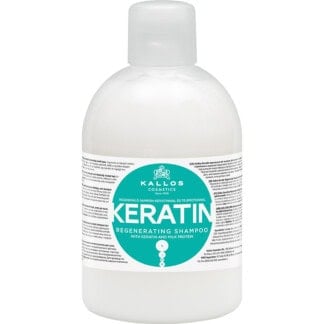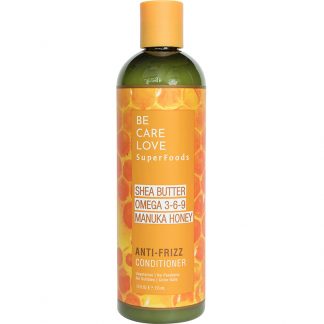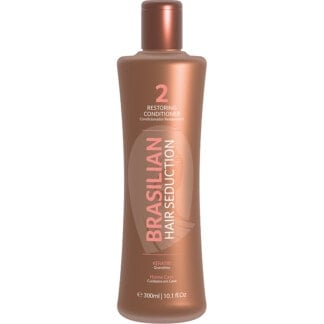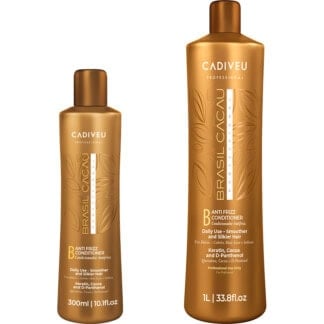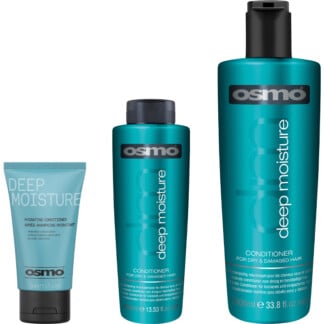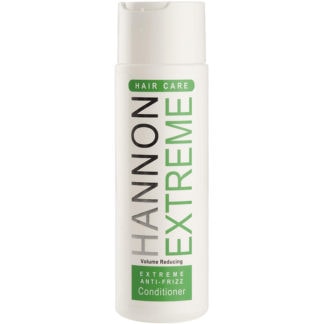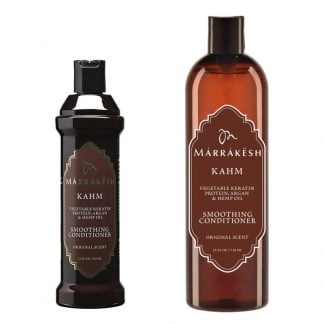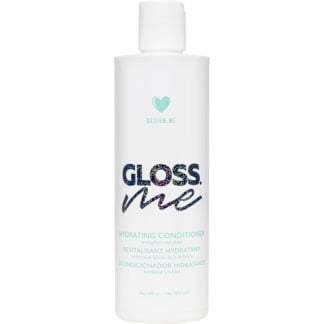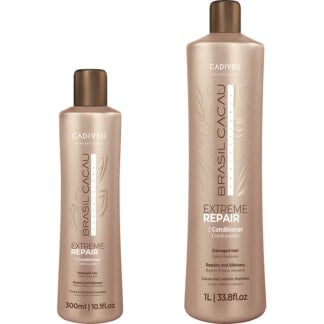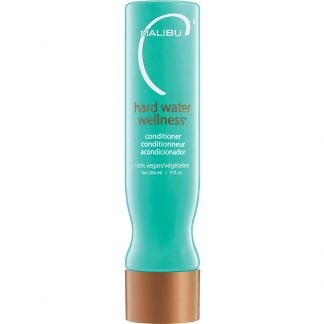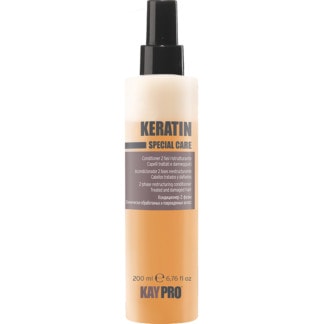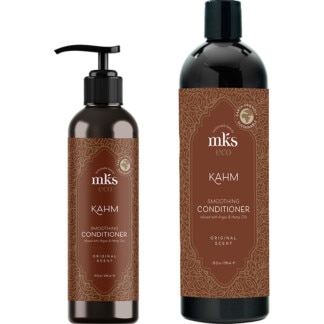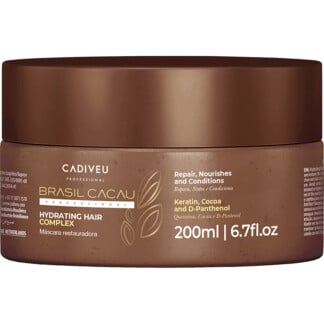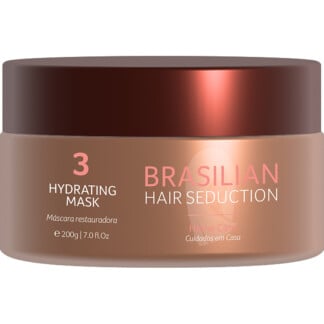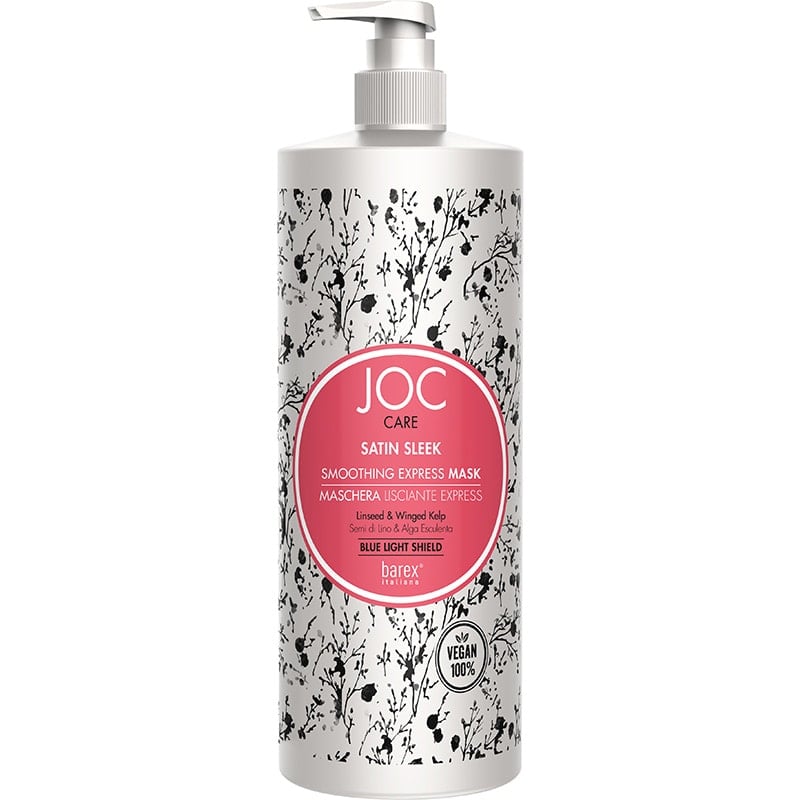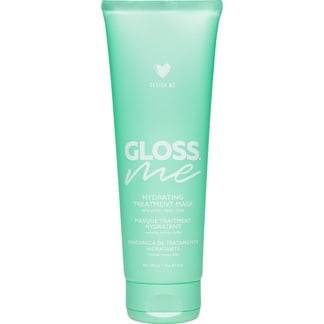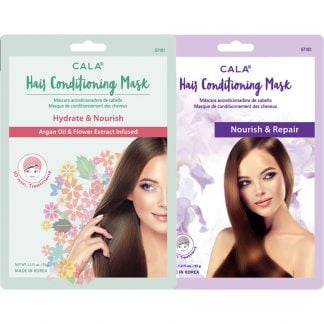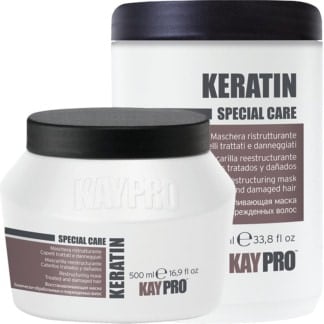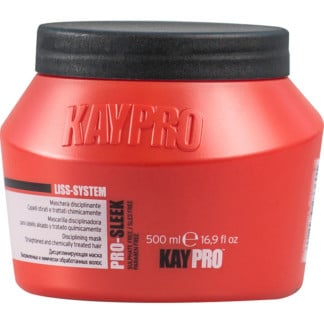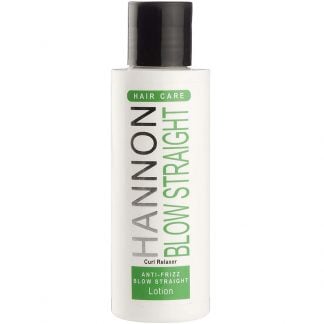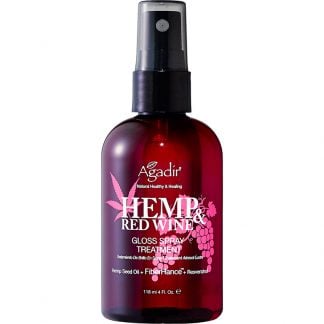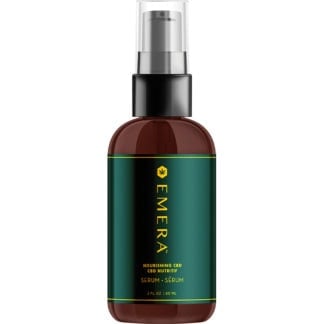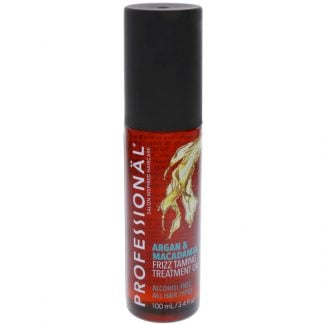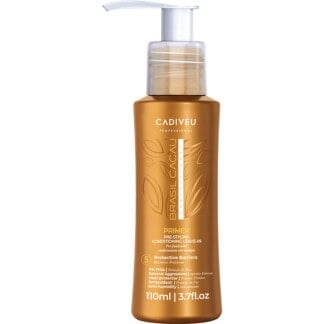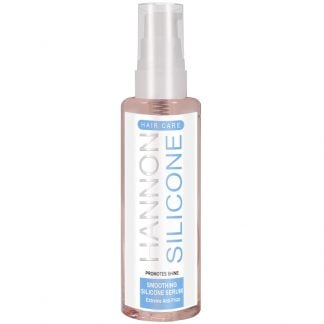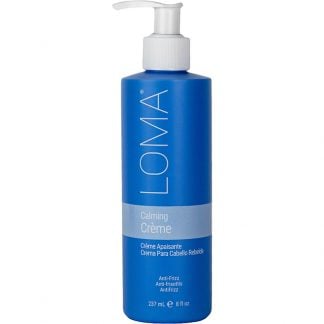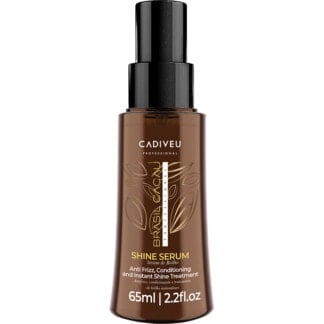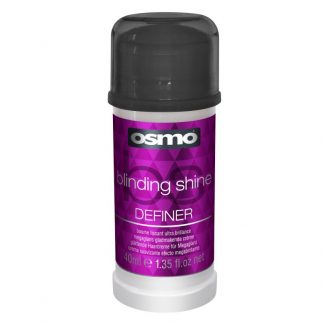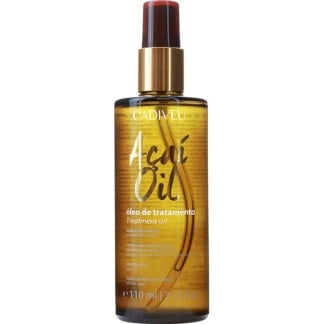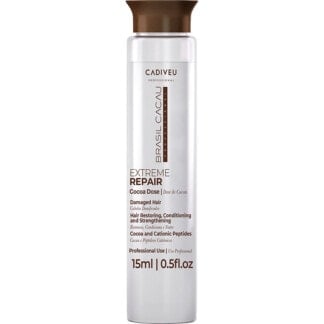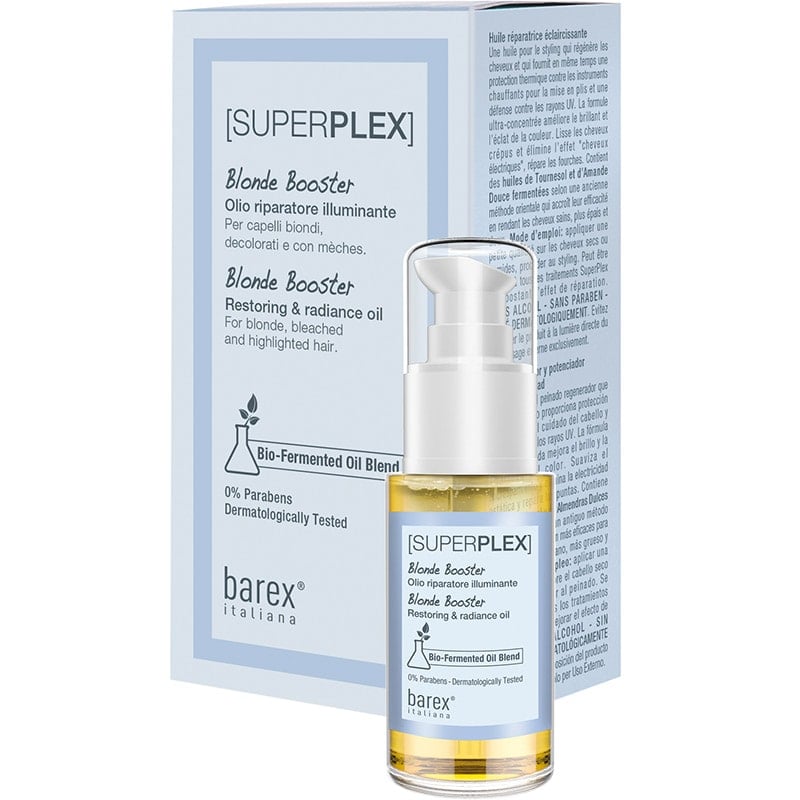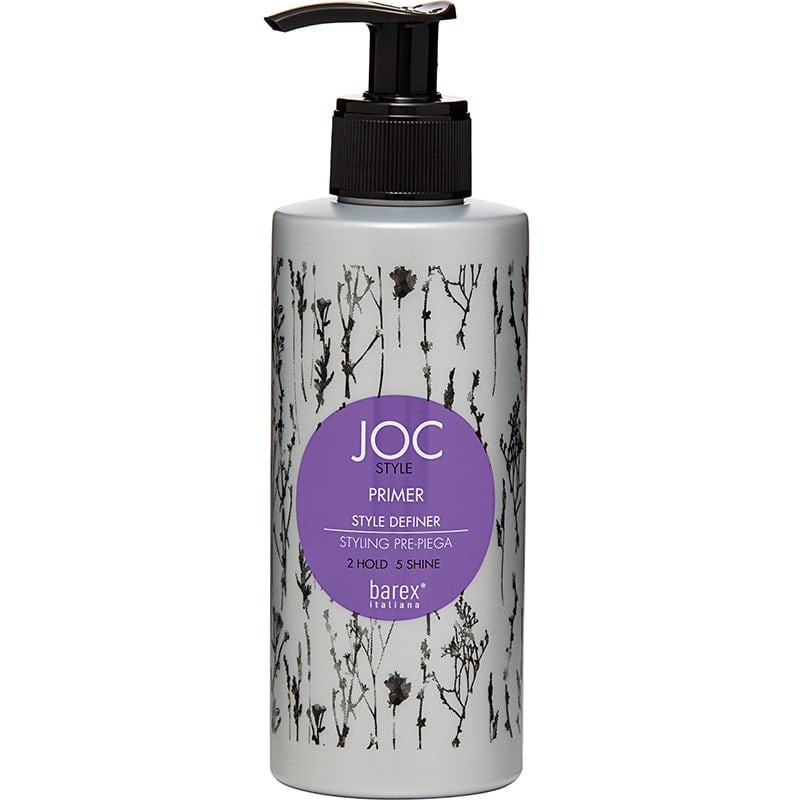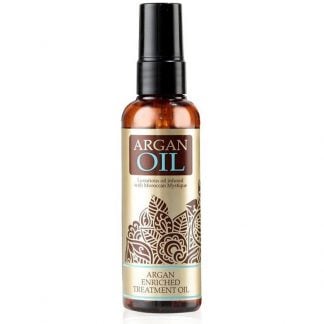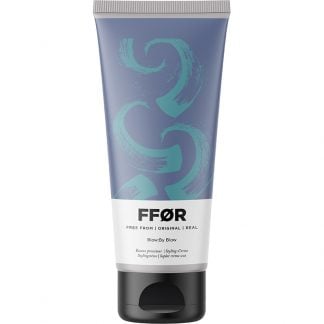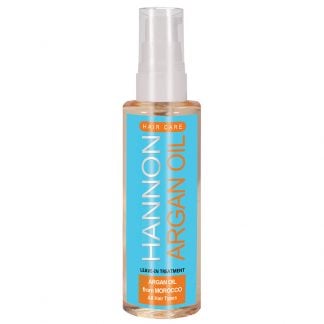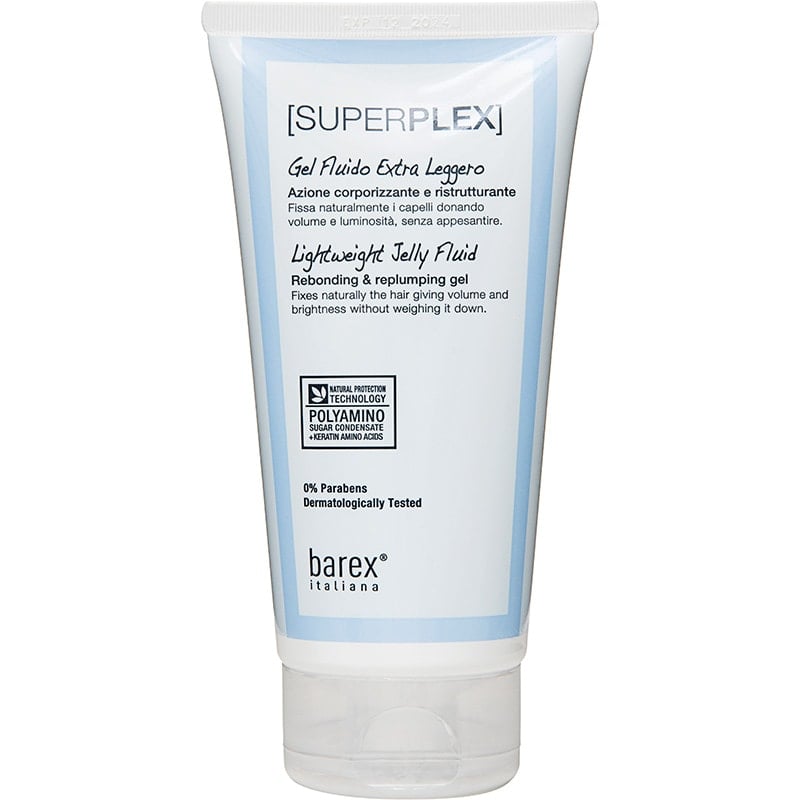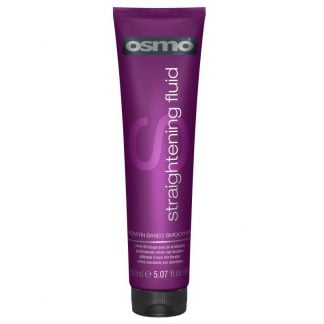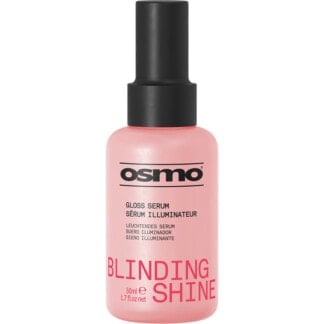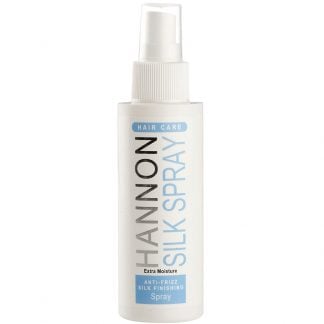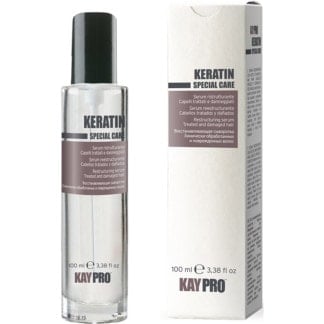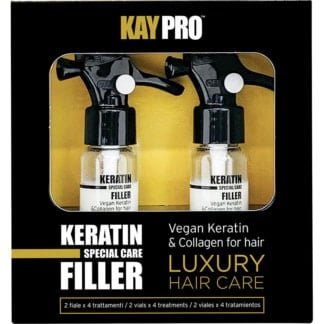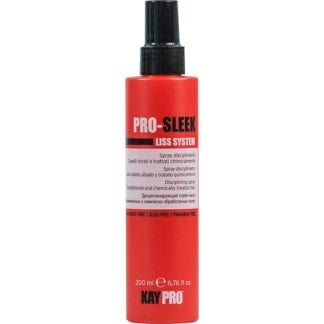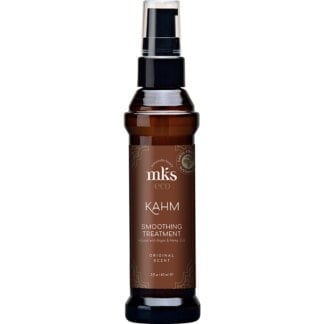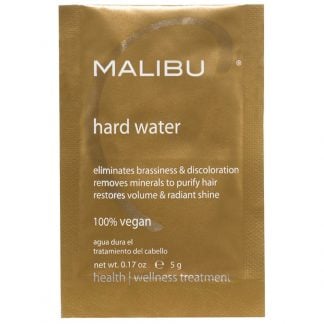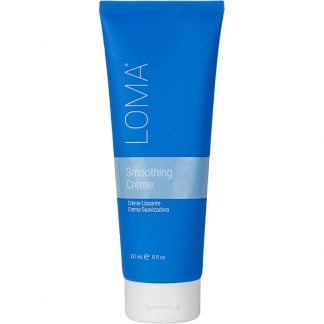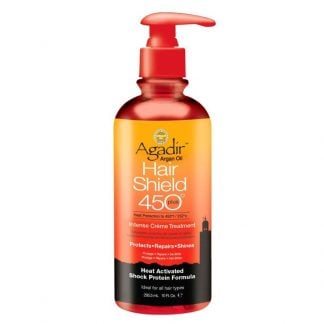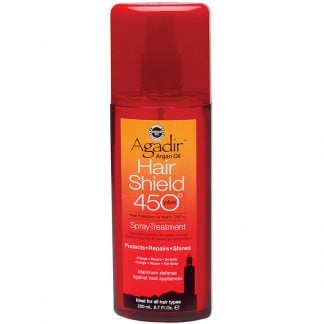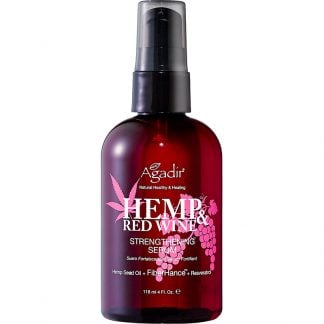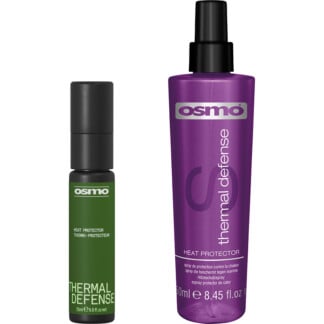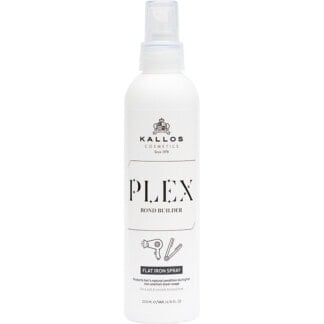
Best Treatments for Keratin-Straightened Hair in SA
You leave the salon with the glossiest straightened hair after a keratin treatment, but soon start to notice fly-away strands, curls and frizz. You need to know how to keep hair straight.
How to maintain keratin-straightened hair
Hairhouse Warehouse stocks the widest selection of salon-grade products in South Africa, including products that maintain keratin-treated hair.
For in-depth information about how to maintain straightened hair, see our straightened hair FAQ below.
Straight hair treatments
Specialist hair treatments for achieving straight, silky and glossy hair in the comfort of your own home. Instantly tame frizz, static and fly-away strands with professional at-home treatments for all hair types. After treating the hair, care for your new straight hair service with our range of core solutions or individual products listed further down the page.
Core solutions for straightened hair
Straightened hair needs specialised keratin aftercare products to extend and enhance the treatment so it lasts as long as possible. We recommend a three-step process to make caring for hair after keratin treatment easy.
Best shampoo for straightened hair
Step 1 is to use a shampoo formulated for caring for hair after Brazilian keratin treatment. It will inject more keratin into treated hair for instant smoothness and frizz control.
-
Brasil Cacau Anti Frizz Shampoo
Rated 4.88 out of 5R241.84 – R647.71 incl. VAT Select options This product has multiple variants. The options may be chosen on the product page -
Brasil Cacau Anti Frizz Sulphate Free Shampoo
Rated 4.92 out of 5R287.38 – R733.76 incl. VAT Select options This product has multiple variants. The options may be chosen on the product page -
Hannon Extreme Anti-Frizz Shampoo, 250ml
Rated 0 out of 5R258.00 incl. VAT Add to cart -
CDC Daily Care Anti-Frizz Shampoo
Rated 4.50 out of 5R135.54 – R286.74 incl. VAT Select options This product has multiple variants. The options may be chosen on the product page -
JOC Care Satin Sleek Smoothing Shampoo
Rated 5.00 out of 5R215.97 – R383.47 incl. VAT Select options This product has multiple variants. The options may be chosen on the product page -
Brasilian Hair Seduction Restoring Shampoo, 300ml
Rated 4.93 out of 5R238.29 incl. VAT Add to cart -
OSMO Deep Moisture Shampoo
Rated 4.86 out of 5R97.62 – R486.89 incl. VAT Select options This product has multiple variants. The options may be chosen on the product page -
LOMA Nourishing Shampoo
Rated 0 out of 5R157.20 – R526.70 incl. VAT Select options This product has multiple variants. The options may be chosen on the product page -
Brasil Cacau Extreme Repair Shampoo
Rated 4.90 out of 5R263.79 – R694.68 incl. VAT Select options This product has multiple variants. The options may be chosen on the product page -
Marrakesh Kahm Smoothing Shampoo
Rated 5.00 out of 5R128.75 – R475.41 incl. VAT Select options This product has multiple variants. The options may be chosen on the product page -
Malibu C Hard Water Wellness Shampoo, 266ml
Rated 5.00 out of 5R377.23 incl. VAT Add to cart -
KAYPRO Keratin Shampoo for Treated Hair
Rated 4.50 out of 5R204.00 – R294.44 incl. VAT Select options This product has multiple variants. The options may be chosen on the product page -
KAYPRO Pro Sleek Shampoo for Straight Hair, 350ml
Rated 5.00 out of 5R277.50 incl. VAT Add to cart -
MKS eco Kahm Smoothing Shampoo
Rated 5.00 out of 5R239.00 – R365.00 incl. VAT Select options This product has multiple variants. The options may be chosen on the product page -
Kallos Keratin Regenerating Shampoo with Keratin & Milk Protein, 1 Litre
Rated 4.50 out of 5R217.50 incl. VAT Add to cart
Conditioner for straightened hair
Step 2 is a nourishing conditioner that seals the cuticles and flattens the outer layer of hair strands. This prevents frizz, static and weigh-down caused by wet and humid environments.
-
Be Care Love SuperFoods Anti-Frizz Conditioner, 355ml
Rated 0 out of 5R229.50 incl. VAT Add to cart -
Brasilian Hair Seduction Restoring Conditioner, 300ml
Rated 4.90 out of 5R239.55 incl. VAT Add to cart -
Brasil Cacau Anti Frizz Conditioner
Rated 4.94 out of 5R256.05 – R669.87 incl. VAT Select options This product has multiple variants. The options may be chosen on the product page -
OSMO Deep Moisture Conditioner
Rated 5.00 out of 5R97.62 – R604.89 incl. VAT Select options This product has multiple variants. The options may be chosen on the product page -
Hannon Extreme Anti-Frizz Conditioner, 250ml
Rated 0 out of 5R279.00 incl. VAT Add to cart -
Marrakesh Kahm Smoothing Conditioner
Rated 0 out of 5R144.55 – R494.50 incl. VAT Select options This product has multiple variants. The options may be chosen on the product page -
DESIGN.ME GLOSS.ME Hydrating Conditioner, 300ml
Rated 5.00 out of 5R364.00 incl. VAT Add to cart -
Brasil Cacau Extreme Repair Conditioner
Rated 4.87 out of 5R269.64 – R768.83 incl. VAT Select options This product has multiple variants. The options may be chosen on the product page -
Malibu C Hard Water Wellness Conditioner, 266ml
Rated 5.00 out of 5R379.00 incl. VAT Add to cart -
KAYPRO Keratin Biphase Conditioner for Treated Hair, 200ml
Rated 0 out of 5R330.00 incl. VAT Add to cart -
MKS eco Kahm Smoothing Conditioner
Rated 5.00 out of 5R269.00 – R355.00 incl. VAT Select options This product has multiple variants. The options may be chosen on the product page
Best hair mask for straightened hair
Step 3 is a super-hydrating mask that injects intense nourishment through concentrated natural oils that restructure and strengthen your hair for lasting shine and smoothness.
-
Brasil Cacau Hydrating Hair Complex, 200ml
Rated 4.84 out of 5R282.23 incl. VAT Add to cart -
Brasilian Hair Seduction Hydrating Masque, 200g
Rated 4.88 out of 5R289.89 incl. VAT Add to cart -
JOC Care Satin Sleek Smoothing Express Mask, 1 Litre
Rated 0 out of 5R513.65 incl. VAT Add to cart -
DESIGN.ME GLOSS.ME Hydrating Mask, 250ml
Rated 5.00 out of 5R364.00 incl. VAT Add to cart -
Cala Hair Conditioning Mask, 35g
Rated 0 out of 5R85.00 incl. VAT Select options This product has multiple variants. The options may be chosen on the product page -
KAYPRO Keratin Mask for Treated Hair
Rated 5.00 out of 5R232.50 – R322.50 incl. VAT Select options This product has multiple variants. The options may be chosen on the product page -
KAYPRO Pro Sleek Mask for Straight Hair, 500ml
Rated 5.00 out of 5R282.00 incl. VAT Add to cart
Oils, treatments and serums for straightened hair
Hairhouse Warehouse offers a range of products from smoothing oils, serums and fluids that work together with your core solution treatments to maintain silky straightened hair.
-
Hannon Control Anti-Frizz Blow Straight Lotion, 125ml
Rated 4.00 out of 5R225.00 incl. VAT Add to cart -
Agadir Hemp & Red Wine Gloss Spray Treatment, 118ml
Rated 5.00 out of 5R425.00 incl. VAT Add to cart -
Brasil Cacau Gradual Smooth Serum, 215ml
Rated 4.87 out of 5R450.49 incl. VAT Add to cart -
EMERA Nourishing CBD Serum, 60ml
Rated 5.00 out of 5R389.00 incl. VAT Out of stock -
DeMert Professional Argan & Macadamia Frizz Taming Treatment Oil, 100ml
Rated 0 out of 5R374.67 incl. VAT Add to cart -
Brasil Cacau Primer, 110ml
Rated 4.80 out of 5R177.09 incl. VAT Add to cart -
Hannon Silicone Smoothing Serum, 60ml
Rated 5.00 out of 5R245.00 incl. VAT Out of stock -
LOMA Calming Crème, 237ml
Rated 4.00 out of 5R367.15 incl. VAT Add to cart -
Brasil Cacau Shine Serum, 65ml
Rated 4.72 out of 5R287.40 incl. VAT Add to cart -
OSMO Blinding Shine Definer, 40ml
Rated 0 out of 5R304.17 incl. VAT Add to cart -
Brasil Cacau Acai Therapy Oil, 110ml
Rated 4.83 out of 5R449.41 incl. VAT Add to cart -
Brasil Cacau Extreme Repair Cocoa Dose, 15ml
Rated 4.69 out of 5R94.27 incl. VAT Add to cart -
OSMO Straighten Up Keratin Smoothing Complex, 250ml
Rated 4.83 out of 5R342.59 incl. VAT Add to cart -
Superplex Blonde Booster Restoring & Radiance Oil, 30ml
Rated 5.00 out of 5R395.65 incl. VAT Add to cart -
JOC Style PRIMER Style Definer, 200ml
Rated 0 out of 5R345.00 incl. VAT Add to cart -
Truzone Argan Oil, 100ml
Rated 4.00 out of 5R348.47 incl. VAT Add to cart -
FFØR Blow:By Blow Styling Crème, 200ml
Rated 5.00 out of 5R373.31 incl. VAT Add to cart -
Hannon Argan Oil Leave-In Treatment, 60ml
Rated 5.00 out of 5R264.99 incl. VAT Add to cart -
Superplex Lightweight Jelly Fluid, 150ml
Rated 0 out of 5R246.00 incl. VAT Add to cart -
OSMO Straightening Fluid, 150ml
Rated 4.25 out of 5R226.37 incl. VAT Add to cart -
NEW
OSMO Blinding Shine Serum, 50ml
Rated 5.00 out of 5R328.37 incl. VAT Add to cart -
Hannon Control Anti-Frizz Silk Finishing Spray, 125ml
Rated 3.00 out of 5R250.00 incl. VAT Add to cart -
KAYPRO Keratin Serum for Treated Hair, 100ml
Rated 0 out of 5R561.00 incl. VAT Add to cart -
KAYPRO Keratin Filler Vials for Treated Hair, 2 x 10ml
Rated 3.00 out of 5R148.80 incl. VAT Add to cart -
KAYPRO Pro Sleek Disciplining Spray for Straight Hair, 200ml
Rated 5.00 out of 5R243.75 incl. VAT Add to cart -
MKS eco Kahm Smoothing Treatment, 60ml
Rated 0 out of 5R262.00 incl. VAT Add to cart -
Malibu C Hard Water Sachet, 5g
Rated 5.00 out of 5R93.00 incl. VAT Add to cart -
LOMA Smoothing Crème, 237ml
Rated 5.00 out of 5R367.15 incl. VAT Add to cart
Heat protection for after straightening
Use treatments from our range of heat protection products to protect your straightened hair from damage caused by hot styling tools and UV rays.
-
Agadir Argan Oil Hair Shield Intense Crème Treatment, 295.5ml
Rated 4.50 out of 5R390.38 incl. VAT Out of stock -
Agadir Argan Oil Hair Shield Spray Treatment, 200ml
Rated 4.00 out of 5R758.30 incl. VAT Add to cart -
Agadir Hemp & Red Wine Strengthening Serum, 118ml
Rated 0 out of 5R458.95 incl. VAT Add to cart -
OSMO Thermal Defense Heat Protector
Rated 4.81 out of 5R97.62 – R275.20 incl. VAT Select options This product has multiple variants. The options may be chosen on the product page -
Kallos Plex Bond Builder Flat Iron Spray, 200ml
Rated 0 out of 5R169.25 incl. VAT Add to cart
Straightened hair FAQ
If you want smooth, glossy hair, a keratin treatment is a good solution. It’s one of the best treatments for making hair straight, silky and frizz-free. Here’s how to maintain keratin-straightened hair.
A keratin treatment is a chemical salon procedure that makes hair smoother, glossier and straighter. A solution containing keratin – a protein found in hair, skin and nails – and other ingredients is brushed onto your hair. Adding keratin helps strengthen and smooth your hair.
The hair is washed and a stylist brushes the keratin solution onto towel-dried hair. It’s left for 15 to 30 minutes to soak in. Then the hair is blow-dried and ironed straight in tiny sections to seal in the product.
Some stylists prefer to blow-dry the hair first and apply the treatment to dry hair. Either way, the treatment can take up to four hours, depending on the product, the stylist, your hair length and hair type.
A keratin treatment leaves hair intensely shiny, straight and frizz-free. Your hair will be more manageable and easy to style. It will take much less time to blow-dry.
With the right aftercare, most treatments last between three and six months.
A keratin treatment is sometimes called a Brazilian blowout, a Brazilian keratin treatment or BKT. The name depends on the brand or keratin treatment product used in the salon.
Everyone wants to know how to keep hair straight after a keratin treatment. There are certain steps you should follow strictly.
Stay away from water for four days. Don’t wash your hair for at least 72 hours and ideally try to leave it for four days. Water allows keratin, moisture and other nutrients to leak out. Give your keratin treatment time to settle and be thoroughly absorbed into your hair.
Avoid damp and humid environments. This includes swimming pools, steam rooms, saunas and gyms. Remember, every time your hair absorbs water it swells. This allows the keratin to leak and leads to frizziness and kinks in the hair.
Wear your hair loose. Don’t tie your hair in a ponytail, wear a headband or put hairclips, pins or slides in your hair. Definitely don’t wear braids. Don’t push your glasses up onto your head or put your hair behind your ears. These will all cause kinks in your hair.
Don’t over-exert yourself and sweat. Avoid strenuous exercise that causes you to perspire. Perspiration is water and it will cause your hair to swell. Ideally, avoid any strenuous activity for a few days. When you do start exercising, apply a leave-in conditioner before working out.
Avoid any other hair chemical treatments for three weeks. Chemical treatments open your hair cuticles. This will allow the keratin treatment to “bleed” prematurely.
You can use any professional shampoo after a treatment, but it will not help extend the life and structure of the treatment.
For lasting results after a keratin treatment, always use a gentle, restorative aftercare shampoo that injects more keratin into treated hair.
You also need to know how to wash hair after a keratin treatment. Experts recommend shampooing with tepid water and finishing with a cool rinse.
As well as aftercare shampoo, you must follow-up with a calming and moisturising anti-frizz conditioner. It works to immediately seal the cuticles after shampooing to give a shinier and smoother look while reducing frizz further. Active ingredients extend the lifespan of your keratin treatment.
Occasionally, substitute your conditioner for an intensely hydrating mask. This will strengthen and restructure your hair to create smoothness and natural shine. How long you leave the mask on will depend how naturally frizzy or curly your hair is.
There are a variety of aftercare products and treatments you can use on your keratin-treated hair, but choose carefully and use them sparingly.
Leave-in conditioners containing keratin, collagen or polypeptides will strengthen your hair.
Shine serum creates a protective barrier between the hair shaft and the environment to provide humidity protection and instantly eliminate frizz and fly-away strands.
Oils provide maximum nourishment to strengthen brittle hair and protect against damage caused by UV rays and hot styling tools.
Now you know how to maintain keratin-treated hair. Unfortunately, some people experience hair breakage after a keratin treatment.
A keratin treatment makes your hair feel silky, shiny and frizz-free but some of the chemicals used are harsh. In the long run, they can cause damage. Some people experience hair and skin problems after getting keratin (or other chemical straightening) treatments. Problems can include:
- hair breakage
- brittle hair
- hair loss
- hair patchiness
- skin rashes and blisters.
Try to choose a keratin treatment with a low percentage of (or no) formaldehyde. Formaldehyde-free keratin treatments are increasingly available in salons.
In order to prevent brittle hair and breakage, it’s essential to know how to care for keratin-treated hair and how to keep keratin-treated hair healthy.
Start by using hair products recommended for maintaining keratin-treated hair.
You’re in for a quick chemistry lesson here. Formaldehyde is a gas. Technically, keratin treatments don’t contain formaldehyde. They do contain methylene glycol, formalin, methanal or methanediol, which, when heated or mixed with water, release formaldehyde gas.
It’s the formaldehyde (not the keratin) that straightens your hair. To understand what happens, you need to think of straight hair as a ladder and wavy or curly hair as a spiral staircase. Imagine the steps are bonds.
To make curly hair straight, the bonds – the steps – are broken and the shafts straightened to create the straight hair (ladder) from wavy hair (the spiral staircase). It’s the formaldehyde that does this and then locks your hair into a straight position.
It’s important to know that formaldehyde is classified as a human carcinogen (a cancerous product) by the International Agency for Research on Cancer. As it’s released into the air during the hair straightening process, it may come into contact with your skin or you may inhale it.
So ask your hairdresser what kind of keratin treatment is used before you book your hair appointment. Check the labels carefully. Ask if there are formaldehyde-free keratin treatments for straightening hair. These are more widely available in salons than ever before.
Avoid formaldehyde and other harmful chemicals if you’re pregnant or breastfeeding. Also, it’s best not to take babies or small children to salons where they may be exposed to chemicals in the air.
The best way to stop hair breaking is to maintain an aftercare routine by using hair products designed to care for keratin-straightened hair.
Every time you have a keratin treatment, your hair becomes more brittle and prone to breakage. Don’t have an in-salon keratin treatment more than three times a year.
Before getting into bed, brush your hair from root to tip for a few minutes. This helps distribute the natural oils throughout the length of your hair. Use a natural fibre brush.
Sleep with your hair loose. Don’t tie it up or clip it in place. You’re trying to keep it as straight as possible while you sleep.
Swap your cotton pillowcase for a super-soft silk or satin one. This will help reduce friction and frizz.
If you wake up with kinks and frizz in your hair, pass the flat iron over your hair a few times until it’s smooth and straight.
It’s quite common to feel like you have “greasy” hair after a keratin treatment. Don’t panic. Usually, this is directly related to how you care for your hair after the keratin treatment.
Your hair may feel oily and sticky because some people’s hair takes longer to absorb the keratin treatment. This will depend on your hair type and the brand of treatment used.
Curly, low-porous hair takes longer to absorb keratin. Be patient and give the treatment time to soak in.
Also, your natural oils may be making your hair feel greasy. Don’t wash your hair but you can use dry shampoo to refresh your roots.
The best time to colour your hair is before a keratin treatment. The treatment seals in the colour, making it last longer and appear more vibrant.
You should wait at least three weeks – preferably longer – if you choose to have colour applied after a keratin-straightening treatment.
Have your hair cut after the treatment. Your hair will have a smoother texture and will lie differently, so it should be cut then.
When you’re flat-ironing your hair, pull it upward and away from your scalp. Going upward, instead of straight back or down, will create volume.


